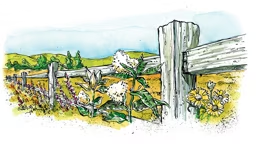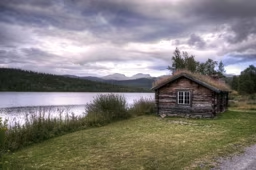Mold is everywhere, but its actual amount and location determine how harmful the mold can be to your cabin and health. When it comes to protecting the longevity of your cabin, camp or cottage, it is important to know how to recognize signs of mold or water damage, how to catch these issues early on, and how to prevent them altogether.
Moisture brings mold
Moisture brings mold
Mold becomes a problem when moisture is present, creating an ideal environment for the mold to grow. The risk for mold increases in places that are more exposed to moisture, such as bathrooms, kitchens, attics and basements. Brian Jones, president of Jones Design Build LLC in Minneapolis, has seen this firsthand. His company has worked on many bathroom renovation projects which required mold remediation.
"Oftentimes, bathrooms that are not properly ventilated or not properly insulated are at greater risk of mold issues, regardless of the age of the home,” Jones says.
This was the case with Jones’ clients and their 10-year-old home. They were concerned when they noticed stains on their first-floor ceiling, directly under the location of their upstairs shower. Once Jones took down the drywall during the demolition phase of the project, they learned the truth: The fiberglass batt insulation throughout the entire shower-wall area was covered in mold.
“In this instance, the ceiling of the shower was sloped, and it can be difficult to install fiberglass insulation properly when the area is sloped, increasing chance for error,” Jones says. “There needs to be a plastic barrier that protects the insulation from openings where moisture seeps in.”
Given the oddly shaped shower, the vapor barrier between the drywall and the insulation was not taped or sealed at all seams, so moisture found its way under the plastic, creating a ripe environment for mold to thrive.
Removing the mold
The fact that the growth was behind a wall reduced the direct-health risk to the homeowners, but if left untouched, mold poses another risk to the structural elements of their bathroom, says Jones.
“Mold that continues to grow for years can actually eat through the wood, causing structural problems,” he says.
After the discovery, Jones called in mold remediation experts to clear the area before work could continue. If not properly removed, mold can re-emerge.
Luckily for Jones, remediation is a fairly simple process. “A plastic barrier contains the area with the mold, so that it doesn’t spread into other parts of the home. As it is being removed, a fan drives air to the outside through a window, and HEPA vacuums remove leftover mold particles from the area,” he says. Once the area is completely cleared of mold and dried, it is sealed with a mold-inhibiting paint to help prevent future outbreaks.
Following the remediation, Jones recommended using a polyurethane spray-foam insulation instead of the fiberglass batt insulation that was originally used.
"The polyurethane foam insulation is sprayed into the area, so it completely fills every crevice and hole that may be present,” Jones says. Not only does this type of insulation block all moisture, but it is also known for its energy-efficient elements.
Detection and prevention
Do you have moisture issues in your cabin? Jones provides the following tips to ensure early detection of moisture issues and preventative measures for mold growth.
Staining. By the time you notice staining, you can be sure that water either has been or is present. “Drywall and paint is easy and cheap to replace, so when I see staining, I recommend clients cut through the drywall immediately and locate the problem,” Jones says.
Odor. Many times you don’t need to physically see the mold to know that it is present because it will have an odor. If you walk into a room or basement and notice an odor, it’s time to investigate.
Blistering. Paint that is peeled or blistering is another sign of water damage. Also bulging dry wall, and screws or joints that are popping out is evidence that the wood is warping from repeated water exposure.
Ventilate. Areas of the home that have accessible water systems or could face water exposure from the outside are extremely susceptible to mold growth and must have proper ventilation. “I suggest a bathroom fan with a wired timer, that will continue to run 30 to 60 minutes following shower use to keep the moisture level down,” Jones says.
For more information, visit www.NARI.org.









